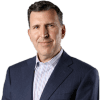Tomorrow, Wednesday, the Fed will announce its third monetary policy decision of the year. The vast majority of specialists expect an increase of half a point that would leave the funding rate at 0.75 percent.
Expectations about the rate hike trajectory have been revised upwards considerably in recent months and the market will be closely watching the Fed’s statement and press conference for signs of the institution’s next moves.
It is worth remembering that as recently as September 2021, the market was anticipating that the Fed would make a single quarter-point increase during 2022 and that the rate would end this year at 0.25 percent.
Immediately after the March meeting, the market began to price in a scenario in which the Fed would make seven quarter-point hikes each through 2022 (including the March decision) and the rate would end on year in a range of 1.75 – 2.00 percent.
This scenario was in line with what was reflected in the dot plot published by the Fed in the macroeconomic projections document that accompanied the March monetary policy decision. However, in recent weeks, some members of the Fed Open Market Committee (FOMC) have made public interventions in which they have reflected the growing probability of a scenario of higher rates.
On April 18, St. Louis Fed President James Bullard was blunt in stating that current inflation is too high and that the Fed is behind the curve in its inflation-fighting mission. As a consequence, argued Bullard, the Fed should increase the funding rate to 3.5% by the end of this year. This would involve a three-quarter point increment followed by five half-point increments.
This position is consistent with what Bullard expressed in the March dot plot. Although Bullard is known as one of the more hawkish members of the FOMC, he is not the only one expecting a higher rate scenario than was envisioned in the Fed’s macroeconomic projections in March.
For one thing, the March meeting minutes show that the FOMC came close to opting for a half-point increase instead of a quarter-point one. On the other hand, both John Williams (president of the New York Fed) and Lael Brainard (deputy governor of the Fed) expressed their desire to accelerate the pace of increases in the benchmark interest rate, mentioning that a half-point increase in this week’s meeting would be a very reasonable option.
Additionally, in his intervention in a discussion panel sponsored by the European Central Bank, the president of the Fed, Jay Powell, affirmed that the Fed could take a more aggressive rate hike path.
Specifically, Powell considered it appropriate for the Fed to opt for a half-point hike at this week’s meeting. For its part, the rate futures market has been discounting a more aggressive upward path that now incorporates movements of half a point for this meeting and the next three in June, July and September.
However, some observers have already begun to forecast something more akin to Bullard’s scenario with a half-point increase this week, followed by three-quarter point increases in June and July.
Deutsche Bank suggested that rates could reach 5% in this upward cycle, a level not seen since 2006. Although it is true that inflationary pressures originated from multiple shocks on the supply side, the situation of full employment in the market labor market and the risk of a de-anchoring of inflation expectations is contributing to a scenario in which inflation is already beginning to put pressure on wages.
In this context, with inflation at its highest level in 40 years, the Fed has very little room for manoeuvre.

Managing Partner of EP Capital, SC
Without Borders
Joaquín López-Dóriga Ostolaza is the Managing Partner of EP Capital, SC, a consultancy specialized in mergers and acquisitions founded in 2009.
He is a graduate of the Bachelor of Economics from the Universidad Iberoamericana, where he graduated with honors and the highest average of his generation. He has a Master’s degree in Economics from the London School of Economics, where he was awarded the British Council Chevening Scholarship Award.